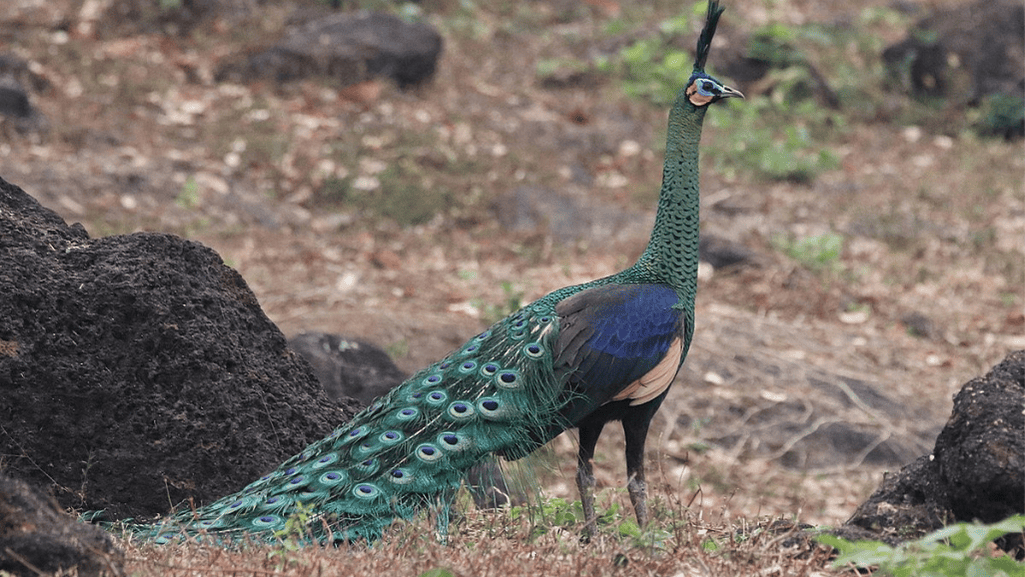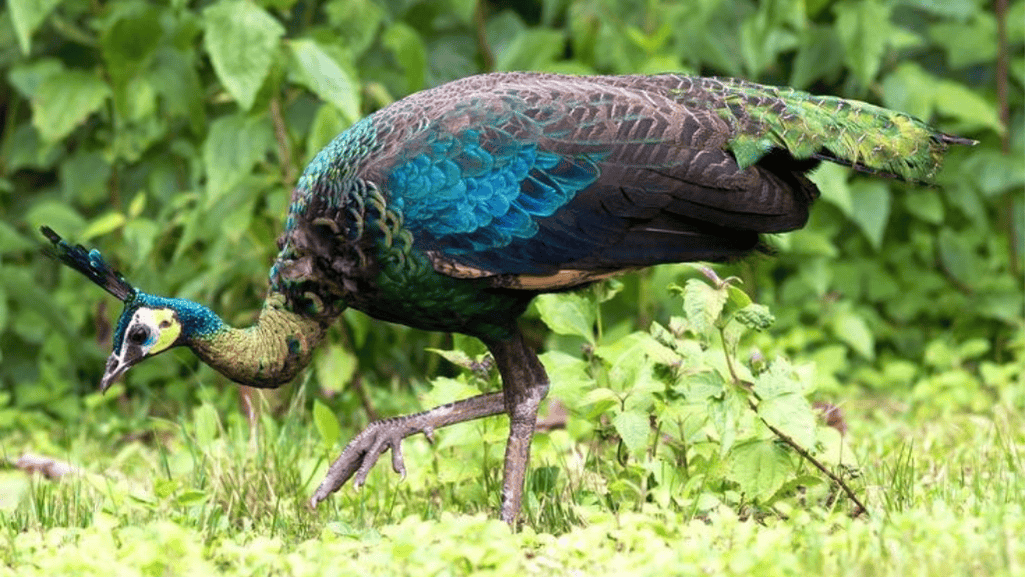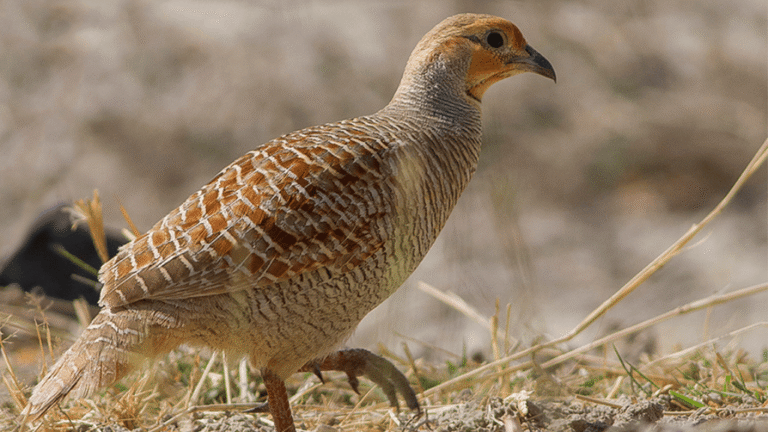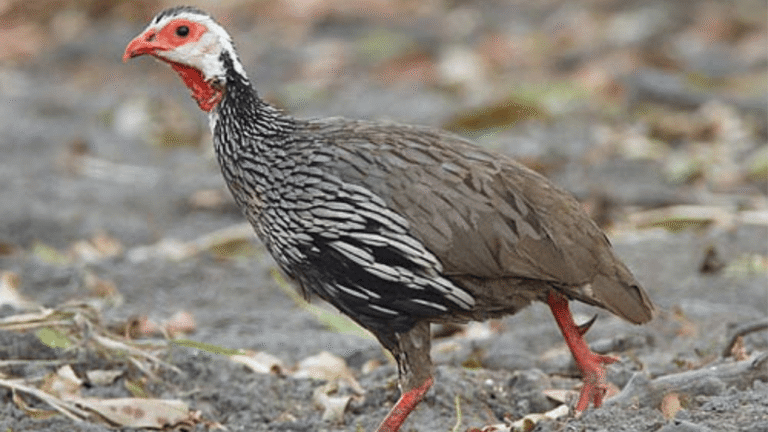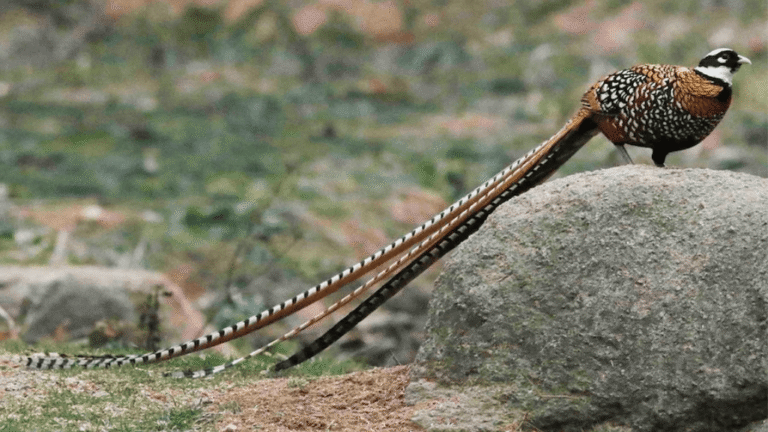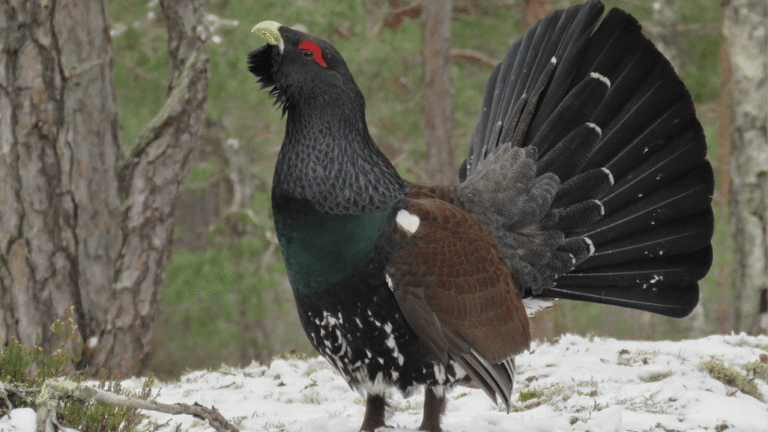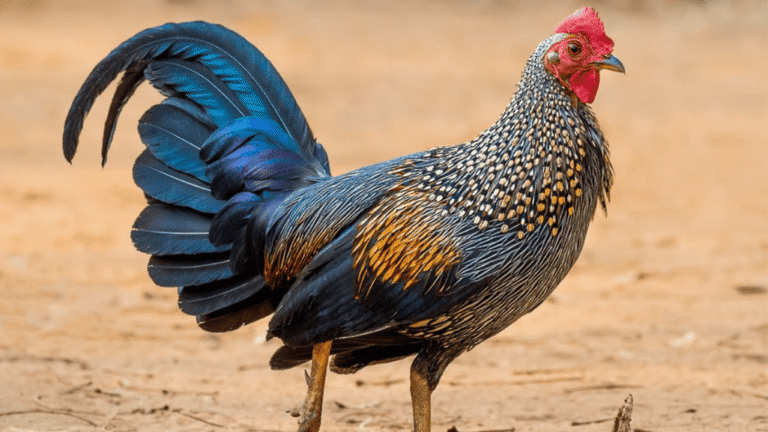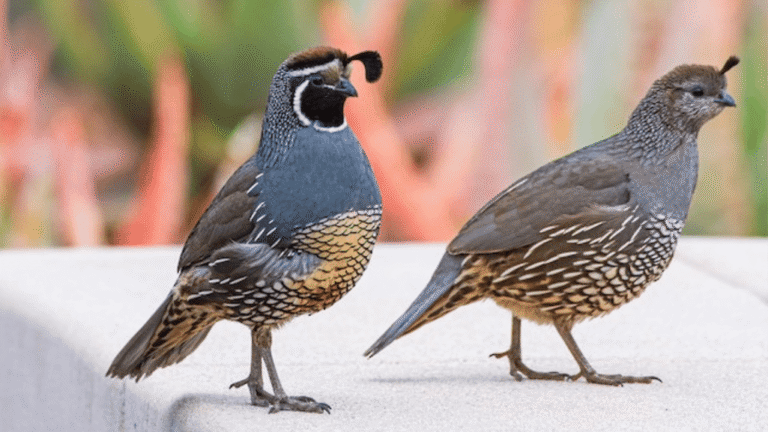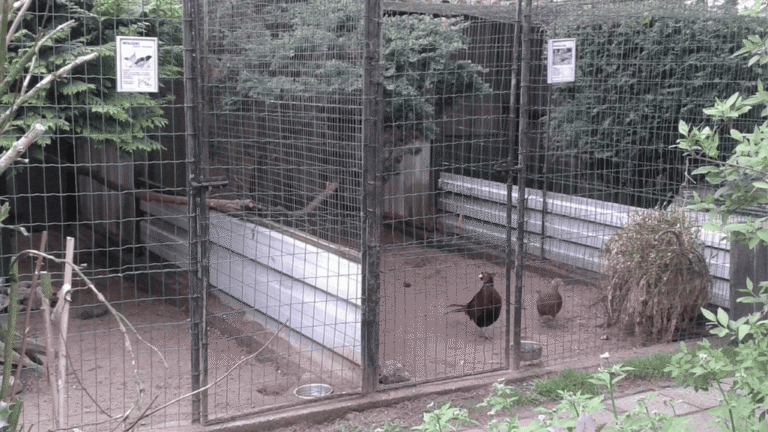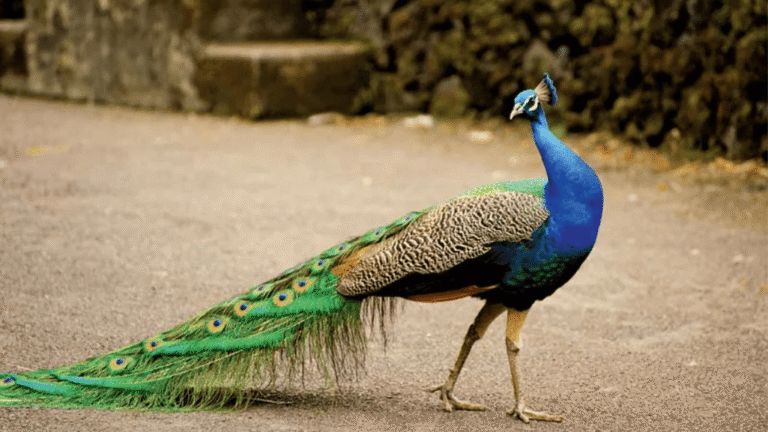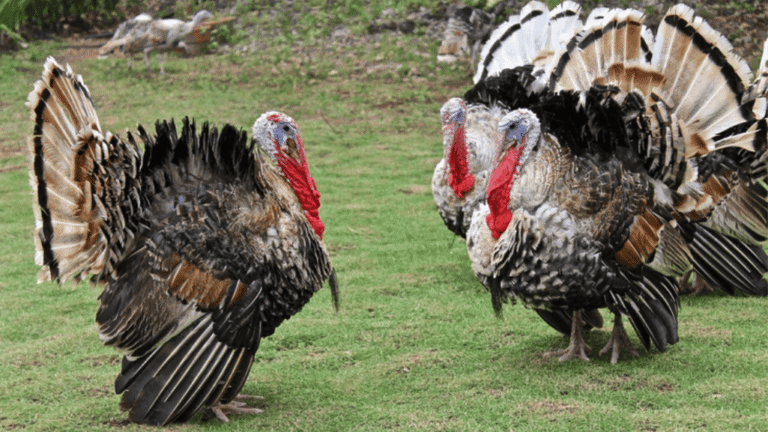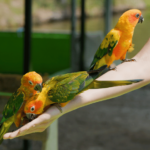The green peafowl, also known as Pavo muticus, is an endangered species native to Southeast Asia. This magnificent bird is renowned for its colorful plumage and large size. However, due to habitat destruction and hunting, the green peafowl population has drastically declined, making conservation efforts crucial for their survival.
In this article, we will explore the fascinating breeding habits and stunning plumage of the green peafowl. We’ll also delve into the conservation efforts being made to protect this beautiful species in Southeast Asia.
Key Takeaways:
- Green peafowls are endangered species native to Southeast Asia.
- They are known for their vibrant and elaborate plumage.
- Habitat destruction and hunting have severely impacted their populations.
- Conservation efforts focus on restoring habitats and implementing anti-poaching measures.
- Preserving the green peafowl is crucial for biodiversity and the future of Southeast Asian ecosystems.
Description of the Green Peafowl
The green peafowl, scientifically known as Pavo muticus, is a magnificent bird species found in Southeast Asia. Renowned for its long tail and colorful plumage, this large bird captivates with its striking appearance. Both males and females possess tall crests, long legs, and heavy wings, emphasizing their regal stature.
The males boast a bluish-green hue, while the females exhibit a more golden-green coloration. Their splendid feathers display an intricate pattern and shimmer in the sunlight. With a resonant call that resonates through the air, males vocalize from their roost sites at dawn and dusk, adding to the allure of their presence.
Notably, the green peafowl is larger than its Indian peafowl counterpart and possesses impressive flying capabilities, soaring through the skies with sustained flight. Its majestic form and vibrant plumage make the green peafowl a true symbol of natural beauty.
Key Features of the Green Peafowl:
- Large size, with a long tail and captivating plumage
- Tall crests, long legs, and heavy wings
- Males display a bluish-green coloration, while females exhibit a golden-green appearance
- Loud, distinctive call repeated by males at dawn and dusk
- Capable of sustained flight, distinguishing it from the Indian peafowl
Distribution and Habitat of Green Peafowl
The green peafowl, also known as peafowl or Pavo muticus, was once abundantly distributed throughout Southeast Asia. It could be found in countries such as Myanmar, China, Thailand, Vietnam, and Malaysia. However, due to habitat destruction and hunting, the range of the green peafowl has significantly reduced.
Despite these challenges, green peafowls can still be found in various habitats across the region. They can adapt to different environments, including primary and secondary forests, grasslands, savannas, and farmland edges. However, they show a preference for dry deciduous forests that are close to water sources and away from human disturbance.
To visualize the distribution of the green peafowl, take a look at the map below:
Green Peafowl Habitat Preferences
| Habitat Type | Preferences |
|---|---|
| Primary Forests | Preferable |
| Secondary Forests | Tolerable |
| Grasslands | Tolerable |
| Savannas | Tolerable |
| Farmland Edges | Tolerable |
| Deciduous Forests | Preferable |
As shown in the table above, green peafowls prefer primary forests and deciduous forests. However, they can tolerate secondary forests, grasslands, savannas, and farmland edges to some extent. These adaptable habitat preferences enable the green peafowl to survive in different ecological conditions despite the challenges it faces.
Classification of Green Peafowl
The green peafowl, scientifically known as Pavo muticus, belongs to the Phasianidae family and the Pavo genus. This stunning bird species is further classified into three recognized subspecies:
| Subspecies | Common Name |
|---|---|
| Pavo muticus muticus | Java Peafowl |
| Pavo muticus imperator | Indo-Chinese Peafowl |
| Pavo muticus spicifer | Burmese Peafowl |
These subspecies exhibit slight variations in coloration and distribution throughout their natural habitats in Southeast Asia.
Behavior and Ecology of Green Peafowl
Green peafowls, also known as peafowl, exhibit fascinating behavior and have a unique ecological niche. These forest-dwelling birds prefer nesting on the ground and typically lay 3 to 6 eggs during the breeding season.
It is widely believed that green peafowls are polygynous, with males being solitary and forming harems to mate with multiple females. However, interesting observations made in captive settings have suggested that these birds can display strong monogamous tendencies when left undisturbed by human interaction.
When it comes to their daily activities, green peafowls spend a significant amount of time foraging for food on or near the ground. They have a diverse diet, consisting of fruits, invertebrates, reptiles, and other small animals found in their habitat.
In addition to foraging, green peafowls also engage in wading behaviors in shallow water sources. This is not only an activity for hydration but also serves as a means to cool themselves down, especially during hot weather.
The behavior and ecology of green peafowls highlight their importance in the forest ecosystem. Their foraging habits contribute to seed dispersal and help control populations of small animals and invertebrates in their environment, thereby maintaining the delicate balance of the ecosystem.
Ecological Impact of Green Peafowls
The ecological impact of green peafowls can be summarized as follows:
| Ecological Role | Importance |
|---|---|
| Seed Dispersal | Aids in the distribution and germination of plants |
| Predator Control | Helps regulate the population of small animals and invertebrates |
| Habitat Maintenance | Contributes to the health and diversity of forest ecosystems |
As shown in the table above, green peafowls play a vital role in the maintenance and sustainability of their habitat. Understanding their behavior and ecological impact is essential for effective conservation and management strategies to ensure the long-term survival of this magnificent species.
Predation of Green Peafowl
Green peafowls, including the Pavo muticus, are not exempt from the dangers of predation. They face threats from various large cats that inhabit their natural habitats. Some of the major predators of adult green peafowls include the Clouded Leopard, Leopard, Tiger, Jungle Cat, and Fishing Cat. These feline predators pose a significant risk to the survival of adult peafowls in the wild.
Predation of young green peafowls has also been observed, although the specific predators targeting them are not specified in the available data. However, it is important to note that young birds are vulnerable to predation due to their size and lack of experience.
To better understand the impact of predation on the green peafowl population, further research and studies are necessary. By identifying the specific predators targeting both adult and young peafowls, conservationists can develop strategies to mitigate the negative effects of predation and protect these magnificent birds.
Conservation Efforts and Conclusion
As the green peafowl population continues to decline due to widespread habitat destruction, encroachment of agriculture, and hunting, dedicated conservation efforts are being carried out to protect and preserve this majestic species in Southeast Asia.
Habitat restoration is a crucial aspect of green peafowl conservation. By restoring and preserving their natural habitats, we can provide suitable living conditions for these birds and ensure their long-term survival. Efforts are being made to protect and extend the fragmented forests, grasslands, and farmland edges that the green peafowl relies on.
In addition to habitat restoration, anti-poaching measures play a vital role in green peafowl conservation. Collaborative efforts between local communities, law enforcement agencies, and conservation organizations aim to combat the illegal hunting and trade of green peafowl and their parts. Strict enforcement of laws and awareness campaigns are being implemented to address this issue effectively.
It is essential to engage local communities in conservation initiatives to ensure the success of these efforts. By involving the community in education programs, sustainable livelihood projects, and responsible tourism practices, we can raise awareness about the importance of green peafowl conservation and empower local communities to become stewards of their natural heritage.
In conclusion, the conservation of green peafowl is vital to safeguarding this endangered species and the biodiversity of Southeast Asia. Through habitat restoration, anti-poaching measures, and community involvement, we can make a significant impact on the survival and protection of the green peafowl for future generations.
FAQ
What is the scientific name of the green peafowl?
The scientific name of the green peafowl is Pavo muticus.
Where is the green peafowl native to?
The green peafowl is native to Southeast Asia.
Why is the green peafowl considered an endangered species?
The green peafowl is considered an endangered species due to habitat destruction, hunting, and agriculture.
What efforts are being made to protect the green peafowl?
Conservation efforts for the green peafowl include habitat restoration, anti-poaching measures, and community involvement in conservation initiatives.
How many eggs does a green peafowl lay?
A green peafowl typically lays 3 to 6 eggs.
What predators do green peafowls face?
Green peafowls face predation from large cats such as the clouded leopard, leopard, tiger, jungle cat, and fishing cat.



